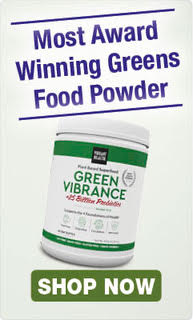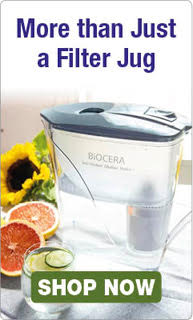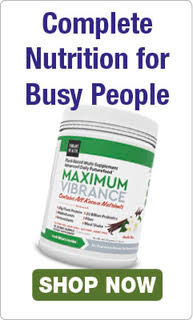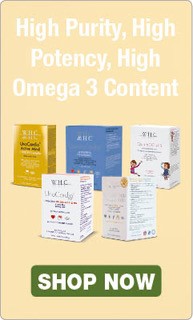It's Organic September, so we thought we'd keep things topical by writing about why buying organic is a good idea. The month-long campaign raises awareness of the producers and farmers who bring organic products to market with their many benefits.
To be classed as organic, products and foods have to adhere to strict regulations. Producers are inspected annually to ensure they are sticking to these strict EU guidelines.
The main benefits of buying and eating organic are:
- You help to protect the environment, combating climate change and protecting biodiversity and wildlife.
- Any livestock reared by organic farmers have a better quality of life, with the freedom to roam. The highest standards of animal welfare protect them.
- Any foods or products won't contain any preservatives, herbicides or additives, and there should be no genetically modified ingredients.
- Organic produce contains far fewer pesticides. - You are eating good-quality food that is more nutritious, as more natural and sustainable organic farming practices ensure there are more nutrients in the soil.
- According to the Soil Association, by switching just one item in your shop to organic, you will help to contribute to changing our food system. Buying more organic food increases the demand for organic farms, meaning fewer pesticides in our environment. It's better for our wildlife and means more farm animals can be raised humanely, under higher welfare standards.
The blight of pesticides in food & waterways
According to the Soil Association, conventional food production widely uses pesticides that harm the environment, water and our food chain.
Not only does it affect the food we eat but also that of wildlife. While these toxins are entering waterways and finding their way into our drinking water, they’re also polluting the drinking water wildlife depend on for their survival, and they contaminate the habitat of aquatic life.
They damage the finely tuned ecosystem and create adverse toxic effects on directly exposed organisms. Pesticides can reduce the abundance of weeds and insects, which are essential food sources for many species.
In 2017, government testing found pesticide residues in 47% of British food, many containing multiple pesticides.
Often, conventionally grown produce is sprayed with more than one pesticide. When you bite into a non-organic apple, it may have been sprayed up to 10 times while still on the tree, and there may have been more than one type of pesticide used with apples testing positive for up to 30 different pesticides.
Scarily, in the UK between 2011 -2015, 100% of oranges and 86% of pears tested contained multiple pesticide residues.
What’s the accumulative effect of these? Has anyone carried out substantial research on how a cocktail of pesticides across the board of all that we eat and drink truly affects us? What about any interactions between them?
Rather like taking several different prescribed medications, all with side effects and interactions – what’s the overarching impact of these pesticides collectively? Does anybody really know?
Either way, toxins are toxins which can negatively impact your health if your body is exposed to too many. And while safe limits have been established, resilience to pesticides, the body’s natural toxicity ceiling and capacity to detoxify varies from person to person.
Besides, how rigorous is the research on which safety is based? And who is paying to carry out that research? Is there any conflict of interest?
Let’s not forget a history of blaring blunders where pesticides and fungicides that were deemed safe. For example, DDT was banned in 1972 after being widely used for decades for insect control in crop and livestock production, as well as in institutions, gardens and homes.
Mounting evidence showed that this extremely toxic pesticide was having a detrimental effect on the environment, impacting on wildlife and human health. DDT is very persistent in the environment. For instance, it is still showing up in sediments of remote Canadian lakes.
To this day, some animals and fish consume DDT from grass, algae and other plants growing in contaminated sediments and soil. By entering their food chain, it enters ours. Among other health concerns, DDT exposure may be linked to Alzheimer’s.
While we can’t avoid toxins altogether, limiting our exposure to them is possible by making a few smart choices. Organic foods undoubtedly contain fewer pesticides, so choosing organic fruit, vegetables, dairy and meat products will unquestionably lessen your toxic load.
Using organic and eco beauty and household products will also help. Not only will you benefit from this, but as a consumer, these choices have a positive environmental impact.
Soil Association facts and figures
– In 2016, over 16,600 tonnes of pesticides were used on British farms to kill weeds, insects and control crop diseases.
Many pesticides don’t just kill the target pest. They can affect other wildlife and the environment by either direct poisoning, contaminating water courses or disrupting ecosystems.
– Many people don’t realise almost 300 pesticides can be routinely used in non-organic farming and these are often present in non-organic food we eat despite washing and cooking.
Organic farming standards, on the other hand, don’t allow any synthetic pesticides and absolutely no herbicides such as glyphosate.
– Organic farmers are permitted to use just 20 pesticides, derived from natural ingredients including citronella and clove oil, but only under very restricted circumstances.
Research suggests that if all UK farming were organic, pesticide use would drop by 98%! This means that organic farms are a haven for wildlife, and these toxic pesticides can’t make their way into the food chain and into us.
– Organic farming reduces disruption to the natural environment. By rotating crops and selecting crop varieties with a natural resistance to particular pests and diseases, organic farmers can reduce or avoid disease problems and the need to control them with chemical inputs.
– Organic farms have around 50% more bees, butterflies and other pollinators.
Glyphosate
Alongside all the pesticides and fungicides, the insidiously harmful herbicide glyphosate is also finding its way into the water and food chain.
The world’s most heavily sold and widely spread weedkiller, glyphosate (the active ingredient in Monsanto’s Roundup) comes with a wealth of environmental and health concerns. Among other things, it’s commonly used to dry out wheat crops before harvest, and the Soil Association are currently calling for a UK ban of this practice.
In UK farming alone, its use has increased by 400% in the last 20 years. It’s also used in public parks and gardens and can be found in your non-eco-friendly garden weedkiller. Glyphosate is one of three pesticides regularly testing positive in our UK bread. It showed up in over 60% of wholemeal bread samples tested by Defra.
While glyphosate manufacturers try to convince us that the levels in our food are safe, WHO have listed glyphosate as a ‘probable carcinogen’. Glyphosate can even cause harm if being sprayed nearby. The Soil Association state that the IARC (International Agency on Research for Cancer) suggests there is no safe level for glyphosate in food.
Organic farming does not allow the use of glyphosate or any other weedkillers, so by buying organic, you are reducing your exposure to this harmful herbicide. If this is something that concerns you, help the Soil Association to rid our food of glyphosate. Find out how here.
The prevalence of pesticides
From creams and lotions to cosmetics, soaps and toothpaste, it’s not uncommon for pesticides (including glyphosate) and GMOs to be found in non-organic toiletries and health and beauty products.
It’s always best to check the ingredients list before purchasing these products as it’s not just pesticides and GMOs you need to worry about. Many of them contain other nasties like parabens, a petrochemical hormone disruptor linked to breast cancer.
You can also find phthalates, oestrogen mimickers linked to infertility and hormone imbalance.
While not always organic, it’s still better to go for eco-friendly household and gardening products. They don’t contain toxic chemicals, so are safer for you, your family and the environment.
They have fewer risks and gentler ingredients. One common ingredient found in cream cleansers, laundry detergent and all-purpose cleaners is MCI or MIT or MI. On the label, it can be called methylisothiazolinone or methylchloroisothiazolinone. It’s a preservative active against bacteria, yeast, and fungi.
The Soil Association states that it’s a common irritant, and prolonged exposure to low levels may damage a developing nervous system.
We can also consider organic when it comes to our clothes, bedclothes, towels and fabric used for any other household and personal care products.
This includes tissues, cotton pads and buds, cleaning cloths, tea towels and anything else you can think of.
The textile industry is one of the most polluting ones around. By buying organic, you protect the planet and wildlife. Animals are reared more humanely (think leather goods), the soil is enriched by natural farming methods, and no GMO seeds are used.
Any textile products you purchase will have been more sustainably produced. You also protect the livelihood of cotton farmers and reduce the amounts of microfibres from synthetic fabrics being released into waterways.
Cottonseed is used for cooking oils, shortenings and margarine. It is also used as poultry and livestock feed. Buying organic cotton can help to reduce the amount of GMOs, pesticides and herbicides finding their way into these products.
The fast fashion industry is the second biggest consumer of water and responsible for 8 to 10% of global carbon emissions, more than all international flights and maritime shipping combined.
With only an estimated one-third of purchased clothes in the UK being worn, reducing our clothing consumption is one way forward. Another is to go for organic, sustainable, environmentally friendly clothing whenever possible.
The dirty dozen and clean 15
Did you know there is a list that shows who the worst non-organic fruit and vegetable offenders are? And another that shows the cleanest?
An updated American version is brought out by the EWG (Environmental Working Group) every year. Every year, in the UK, the government checks pesticide residue levels in food. Using data over five years, PAN UK has compiled a handy downloadable list of the meanest and cleanest that you can reference.
The Dirty Dozen is the most heavily sprayed fruit and vegetables, but an extended EWG list shows an additional 39 items that have tested the highest within popular fresh produce. While this list is American, it can still be a handy benchmark for the UK.
Sadly, many of your favourite fruits and vegetables may well be lurking on this list, so if possible, purchasing organic versions of these foods might be best.
Can't afford to buy organic?
– As mentioned earlier, the Soil Association state that by switching to just one organic food or product, you can help change our food system. This benefits the environment, encourages biodiversity, supports wildlife, and protects animal welfare.
– You can ease your toxic load by investing in a comprehensive water filter to help remove pesticides, toxins and other impurities from your drinking water. The Biocera jug is a more cost-effective way to do this, and it’s worth every penny.
– If you can stretch to adding a few organic foods to your weekly shop, go organic for anything listed on The Dirty Dozen. At least you will be exposing yourself to fewer pesticides from the most heavily sprayed produce of all.
– Seeing as so much glyphosate is showing up in our bread and one of the biggest crops it’s used on is wheat, buying organic bread, and any other products containing wheat would help to cut down your intake of this and any other pesticides.
– Try to shop at local farmer’s markets and from local producers. Not only do you tend to eat more seasonally, which is better for you, but it can also be lighter on your pocket when it comes to eating cleaner food.
It’s not unusual for many local producers to follow organic and environmental farming methods even though they are not listed as organic. Don’t be afraid to ask them what practices they use and whether or not they use many pesticides. A bonus is that you will also be supporting local business.
– You can look up producers online if you’re curious about suppliers to your favourite supermarket and make an educated decision about what non-organic brands you prefer to buy.
– There are some chemical-free fruit and vegetable washes on the market that claim to remove many of the pesticides regular cleaning can’t. Before picking one, do your research to find out which is the cleanest, most ethical and effective. You can find them in most good health food shops.
Be aware that you will never be able to get rid of all the pesticides as many chemicals penetrate beyond the skin into the very fabric of the fruit or vegetable.
– When buying any household products, toiletries or beauty essentials, look for brands that are eco. They’re more likely to have fewer nasties and are safer for the environment. They can often be more cost-effective too.
– The same rules apply when buying food supplements. So if you can’t afford or source good-quality organic ones, buy them from a trusted supplier that uses no additives, preservatives or GMOs. Look for accreditation and read up on their production methods and any testing they carry out for impurities and toxins.
Conclusion
As it’s Organic September, you can play your part by switching to just one organic product in your weekly shop. Consequently, you can contribute to changing our food system. You can help increase the demand for organic farming which helps the environment, encourages biodiversity, supports wildlife, and rears animals under higher welfare standards.
It’s not just about organic foods either. Pesticides, herbicides and fungicides can turn up in non-organic beauty products, toiletries, clothes and textiles and non-eco household cleaners and weedkillers. By choosing to go organic and eco-friendly, not only do you get direct health benefits, but you play a significant part in all of the above.
Filling your trolley up with organic essentials can get pricey. If you’re on a lower budget, do what you can. Even the smallest of trades is something. Where possible, if any foods in your basket are in the Dirty Dozen, try to swap them for organic.
Also try to go organic with any animal produce (dairy, poultry, eggs and meat). Consider buying organic bread, and any other staples that contain wheat like crackers, pasta, cereal and baked goods.
Click here for 30 ways to join the Organic Revolution.
Check out our detox supplements here.
By Rebecca Rychlik-Cunning, a Nutritional Therapist and Homeopath. Follow Rebecca on Instagram, Facebook and Medium, @rebeccabitesback.
Water for Health Ltd began trading in 2007 with the goal of positively affecting the lives of many. We still retain that mission because we believe that proper hydration and nutrition can make a massive difference to people’s health and quality of life. Click here to find out more.




















![Why It's Best to Buy Organic [Plus How to Avoid Toxic Fruit & Veg]](http://www.water-for-health.co.uk/cdn/shop/articles/img-1697717536112.jpg?crop=center&height=885&v=1732120226&width=1434)







Leave a comment